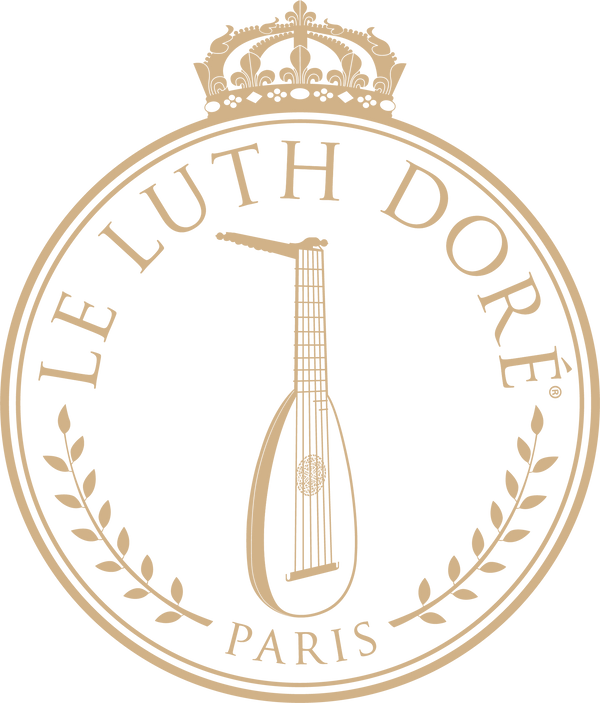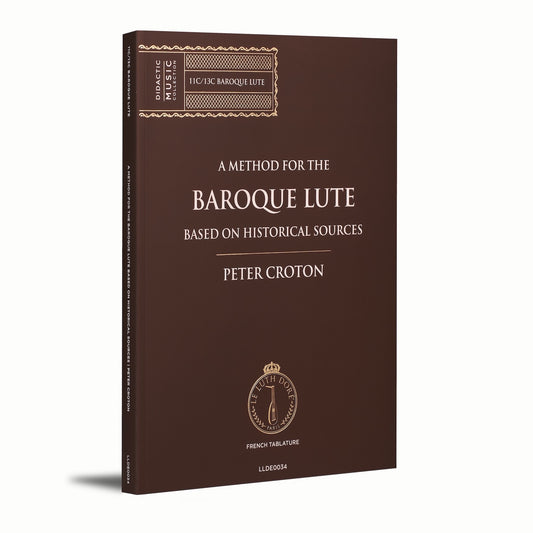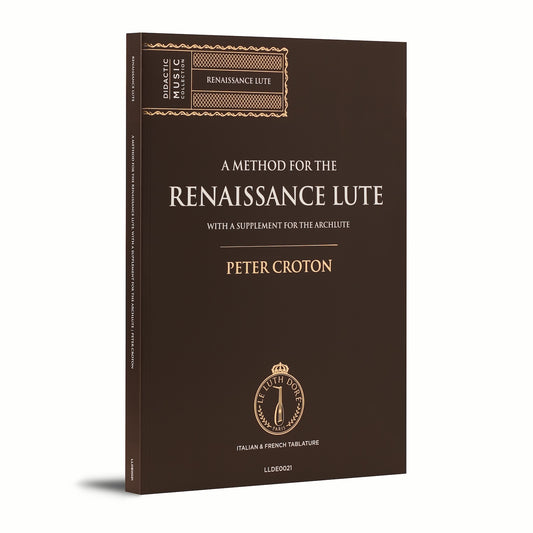Transcribing for the Baroque Lute: Claire Antonini’s Historical Vision
Partager

The Baroque Lute remains one of the most fascinating instruments of the seventeenth century: at once a mirror of French rhetoric and a witness to a musical practice rooted in the art of transcription. In her work as performer and editor, Claire Antonini stands within this living continuity in which re-creation and historical fidelity unite. Her collection L’Enchanteresse and Other Pieces Transcribed for Baroque Lute, published by Le Luth Doré® Urtext Editions, brilliantly embodies this approach: restoring to the instrument its full expressive depth while reconnecting the sonic exchanges among the viol, the harpsichord, and the lute.
In the Baroque era, transcription was not a secondary adaptation but an essential practice. French harpsichordists — Chambonnières, Louis Couperin, Jean-Henri d’Anglebert — directly inherited the lutenists’ style brisé. Many early works for harpsichord are in fact transpositions of lute pieces, before the keyboard developed its own autonomy. Conversely, lutenists in turn transcribed pages from the repertoire for viol or harpsichord, in a constant dialogue between instruments.
Along a musical journey, one can be profoundly moved by works written for another instrument and, upon hearing them, think: “How magnificently this would sound on the lute!”

This is precisely the dynamic in which Claire Antonini situates herself. By adapting works by Marin Marais, Antoine Forqueray, Louis and François Couperin, Chambonnières, Jean-Henri d’Anglebert, Jean-Nicolas Geoffroy, and Pierre de La Barre, she restores to the Baroque lute a synthesising role: an instrument capable of conveying the nuances, ornaments, and rhetoric of the French language. L’Enchanteresse and Other Pieces Transcribed for Baroque Lute is therefore not merely a collection, but an artistic manifesto in which transcription becomes an act of knowledge and interpretation.
A Practice Between Tradition and Renewal
Claire Antonini does not merely transcribe: she reinterprets. In her preface, she evokes those moments when, hearing certain pages for harpsichord or viol, she found herself thinking: “Ah, how beautifully this would sound on the Baroque lute!” — an intuition that led her to extend the gesture of the musicians of the Grand Siècle.

Baroque transcription demands a delicate balance: respecting the original line and counterpoint while accounting for the constraints of range, resonance, and articulation specific to the lute. Claire Antonini’s transcriptions are not simplifications but re-creations: they shape the musical text to the instrument’s breathing, natural polyphony, and timbre.
This approach unites two qualities rarely found together: philological rigour and poetic freedom. By bringing these pages back to life under her fingers, Antonini reaffirms the relevance of the Baroque lute in modern practice — not as a museum piece, but as a medium of meaning and emotion.
To transcribe is to listen anew; it is to carry an artwork forward toward other timbres and other breaths. When music passes from one instrument to another, it is transformed without betrayal — it is reborn.

L’Enchanteresse — Transcriptions for Baroque Lute


This approach stands within a long tradition, as witnessed by the transcriptions of Robert de Visée and the Milleran manuscript. Each adaptation seeks to respect the spirit of the original while accounting for the lute’s technical and expressive specificities. Harpsichord works often require adjustments of range and certain simplifications, while the rapid ornaments of viol pieces must be adapted to lute technique.
Listening to the original versions is strongly recommended in order to grasp more fully the character and rhetoric of these pieces. These transcriptions are an open proposal, inviting each performer to adapt them according to personal technique and musical sensibility.
Composers in the Background
- Marin Marais (1656–1728): virtuoso viol player and composer at the court of Louis XIV, author of the Pièces de viole(1686–1725); he embodies the meeting of contrapuntal science and melodic eloquence.
- Antoine Forqueray (1672–1745): a viol player of fiery and expressive style, whose virtuosity rivalled that of Marais.
- Jacques Champion de Chambonnières (c. 1601–1672): harpsichordist and lutenist, founder of the French harpsichord school and master of the style brisé.
- Louis Couperin (1626–1661): a pivotal figure between lute and harpsichord, creator of the unmeasured preludes inspired by the lutenists’ art.
- François Couperin (1668–1733): “Couperin le Grand,” author of the Pièces de clavecin and the treatise L’Art de toucher le clavecin, synthesising the French and Italian styles.
- Jean-Henri d’Anglebert (1629–1691): harpsichordist to the king and transcriber of Lully, whose elegant writing extends the idiom of the lute.
- Pierre de La Barre (1592–1656): organist and lutenist, representative of a transitional generation in which vocal polyphony opened to instrumental idioms.
Claire Antonini performs a chaconne for Baroque lute
The Lute Society of Japan’s review
The collection L’Enchanteresse and Other Pieces Transcribed for Baroque Lute has received particularly warm praise in Japan.
In the Newsletter No. 38 (2022) of the Lute Society of Japan, critic Mitsuru Doyaya praised “the sensitivity and accuracy of Claire Antonini’s transcriptions,” emphasizing that they “reveal the beauty of the French repertoire while restoring to the Baroque lute the place it truly deserves.”

“Even in the fastest or most ornamented passages originally written for the viol, Claire Antonini’s lute writing remains fluid and natural. It shows a deep understanding of the French style and Baroque phrasing; every line of her transcription breathes, as if it had been conceived for the lute from the very beginning.”
“Claire Antonini’s transcriptions are of exemplary musicality. They are not simple copies, but genuine re-creations that extend the spirit of the Grand Siècle into our own time.”
Mitsuru Doyaya, The Lute Society of Japan, 2022
To listen on France Musique
Claire Antonini discusses French lute music of the 17th century in the program “Guitare, guitares” hosted by Sébastien Llinarès (France Musique).
“Today, focusing on the music of the 17th century — and especially that of the French lute school — a fabulous new recording by Claire Antonini has just been released. Each of her projects is always the promise of learning a great deal while enjoying a delightful and enriching musical experience. Sébastien Llinarès

She has also recorded The Works for Lute by J. S. Bach, collaborated with Le Concert d’Astrée, Le Concert Spirituel, and La Grande Écurie et la Chambre du Roy, and worked alongside artists such as Philippe Jaroussky and Patricia Petibon. At the same time, her encounter with the Persian master Dariush Talaï opened her to traditional Eastern music, from which she has absorbed both ornamental sensitivity and rhythmic suppleness.
Holder of the Diplôme d’État and the Certificat d’Aptitude, she has taught lute and early music for many years in various conservatories. Her aesthetic thinking connects philological exactitude with a deeply poetic sonic intuition: transcriptionbecomes not only a tool of interpretation but also an act of transmission.
Thus, Claire Antonini restores to the Baroque lute its intellectual, sensitive, and universal dimension — that of an instrument which, four centuries later, still resonates with the voice of the Grand Siècle.





